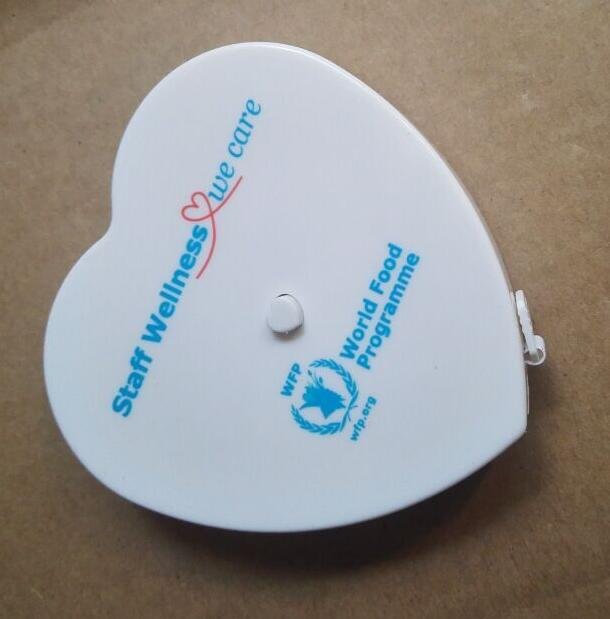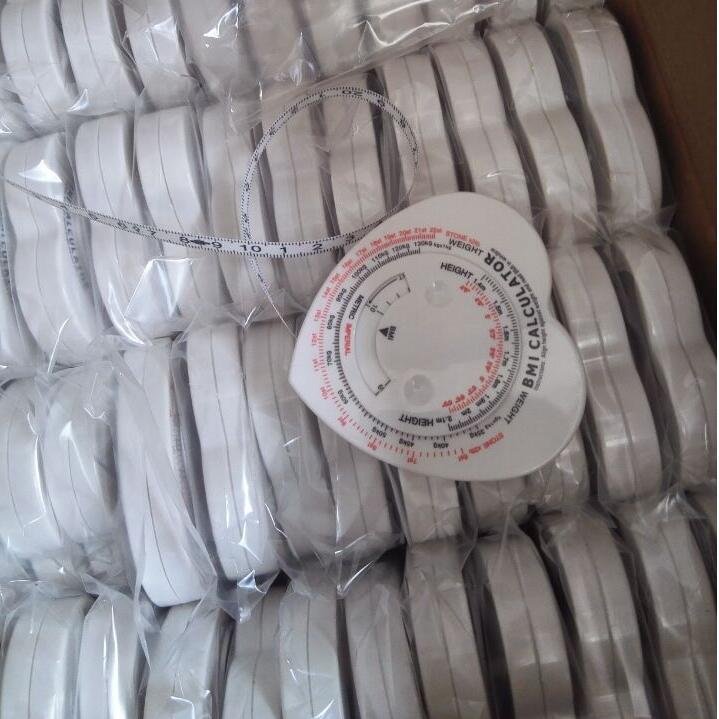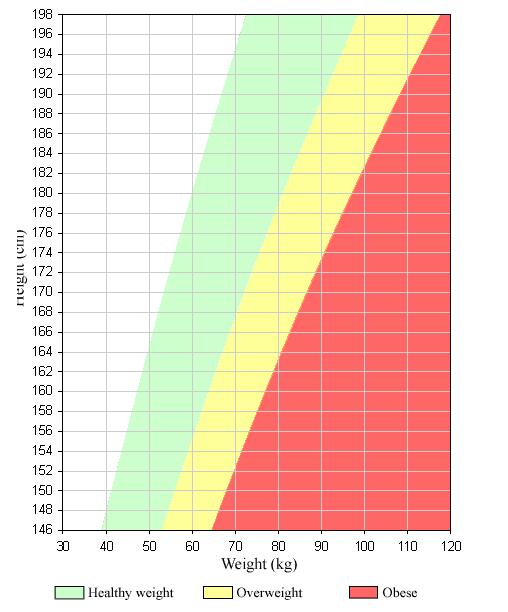BMI Calculator Tape Measures Shipped to WFP | United Nations World Food Programme
| Item: | BMI Calculator with Tape Measure |
| Material: | ABS case, PVC and fiberglass tape |
| Size: | 1.5m*7mm |
| Color: | (case) White, (tape) White, Green, Orange, Red, (Scale) Black |
| Scale Design: | cm on both sides |
| Logo: | Customized |
| Security certificate: | ROHS, En-71 et 6P |
| Package: | 1pc/polybag, 32pcs/inner box, 320pcs/carton, carton size:44*29*35cm GW/NW:14/15kgs |
Wintape could provide our customer high quality BMI calculator with good price, that's the reason why the WFP choose us as their supplier. We could print your customized logo on the tape measure, which is a good way to promote your esteemed company.
The reference photos of the customized WFP (World Food Programme) BMI calcultar measuring tape show:


The introduction of BMI:

Tips:
Adapted from: U.S. National Heart, Lung and Blood Institute; U.S. National Institutes of Health (2000). The Practical Guide: Identification, Evaluation, and Treatment of Overweight and Obesity in Adults.
Use the chart to locate your height and weight. The shaded regions on the chart correspond to normal and overweight ranges based on body mass index (BMI). Keep in mind that this is only a guide. It is not a tool to determine ideal body weight. It is a tool to help you see whether your weight is increasing your risk for disease. People who are very muscular or those who have very little muscle may not get an accurate BMI by using their height and weight alone. Muscle weighs more than fat, so a muscular person may appear to have a higher BMI, or a frail, inactive person may have more body fat than is healthy.
For adults 20 years and older:
A BMI below 18.5 (shown in white) is considered underweight.
A BMI of 18.5 to 24.9 (green) is considered healthy.
A BMI of 25 to 29.9 (yellow) is considered overweight.
A BMI of 30 or higher (red) is considered obese.
A person who has a large change in BMI, even if he or she is not overweight or underweight, should be evaluated to find the cause. If you are Asian, your health may be at risk with a lower BMI.1
A clinical diagnosis of obesity also includes a determination of your waist circumference and risk factors.
If you are within the healthy BMI range and your waist measurement is lower than the cutoff, stay at that weight and check your fitnesslevel, blood pressure, and cholesterol levels.
In men, a waist circumference greater than 40 in. (101.6 cm) is considered a health risk. Women who have a waist size larger than 35 in. (88.9 cm) are considered at risk. In Asian people, health problems are seen with a smaller waist size. In Asian women, a waist size of 32 in. (80 cm) or more raises the chance for disease. In Asian men, a waist size of 36 in. (90 cm) or more raises the chance for disease.2
If you are in the overweight (BMI of 25 to 29.9) or obese (BMI of 30 or higher) category and your waist measurement is higher than the cutoff level, talk to your doctor about other risk factors you may have, including type 2 diabetes, smoking, high blood pressure, high cholesterol, and being inactive. If you have two or more risk factors, your doctor will probably advise you to lose weight and to change your eating and physical activity habits to reduce your risk factors forblood vessel disease, such as coronary artery disease (CAD), peripheral arterial disease (PAD), and coronary vascular disease (CVD).

